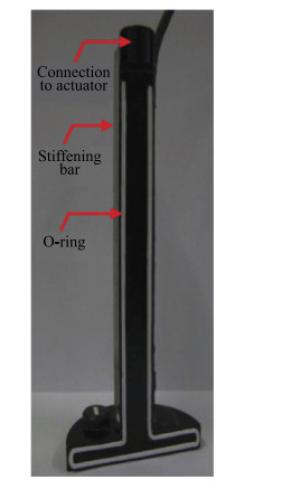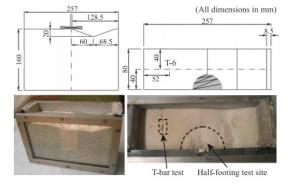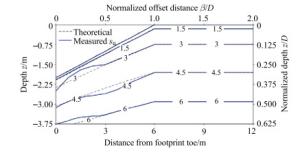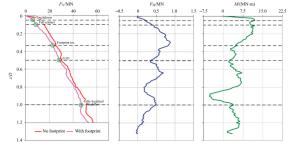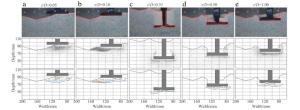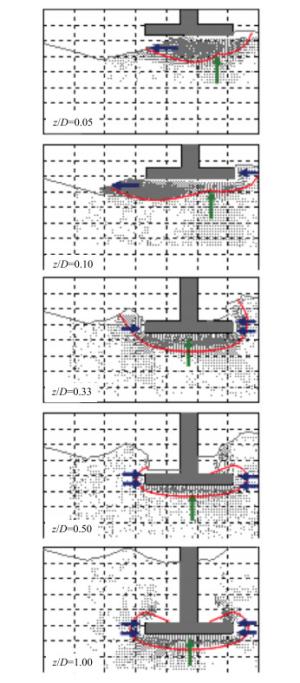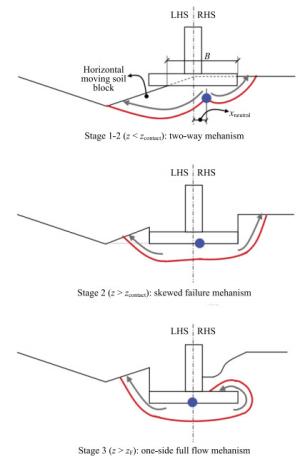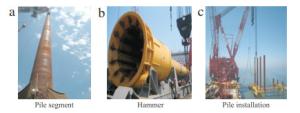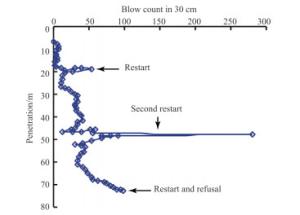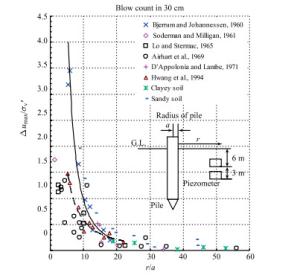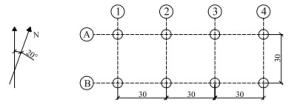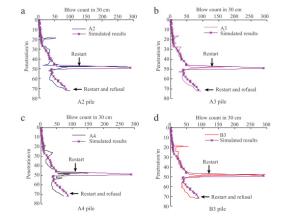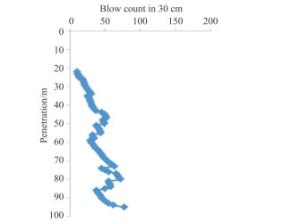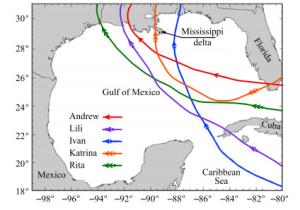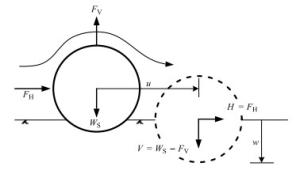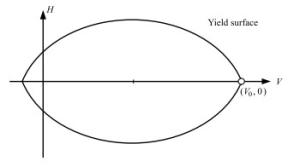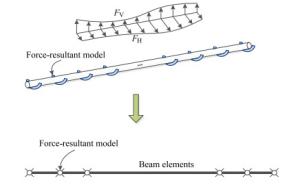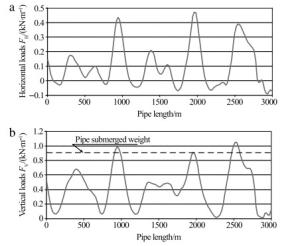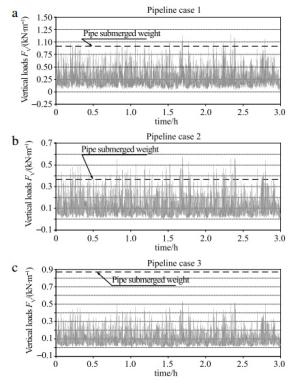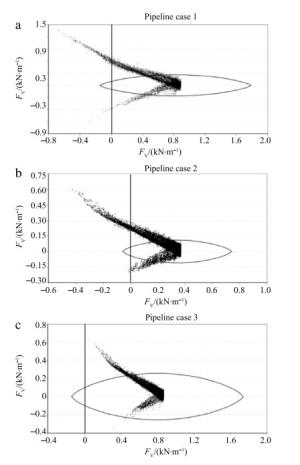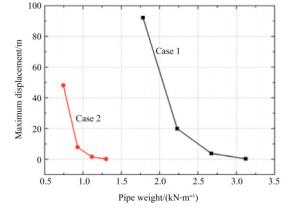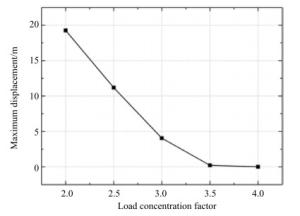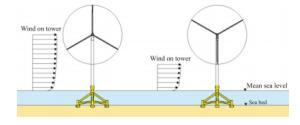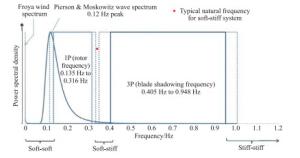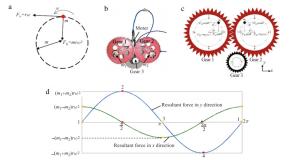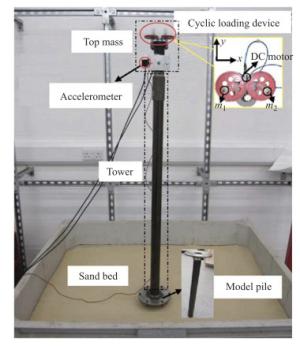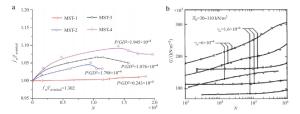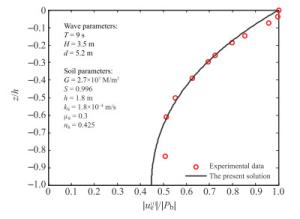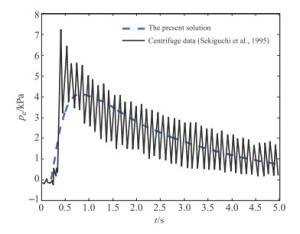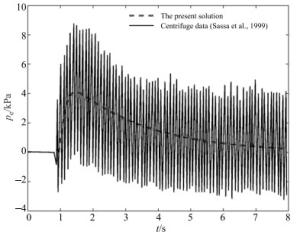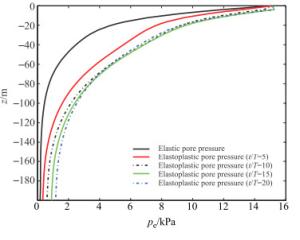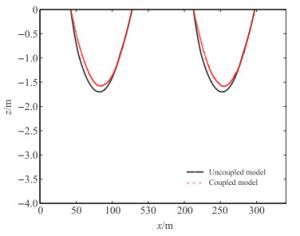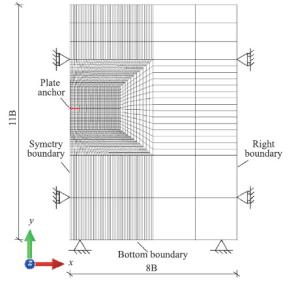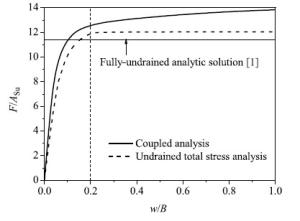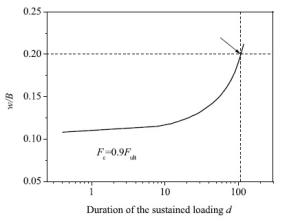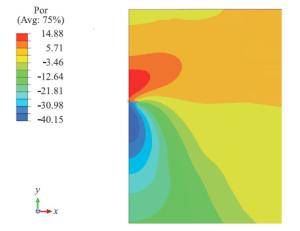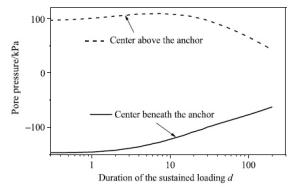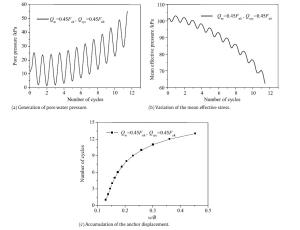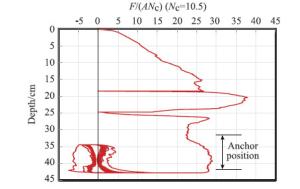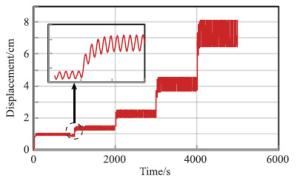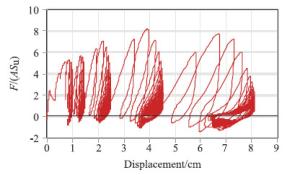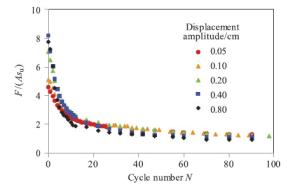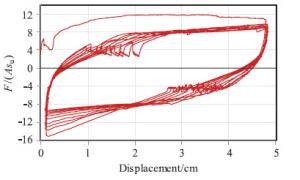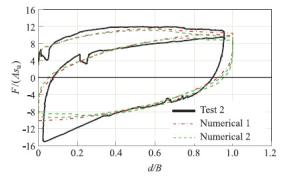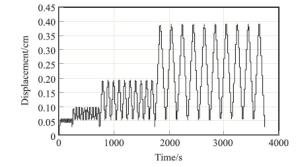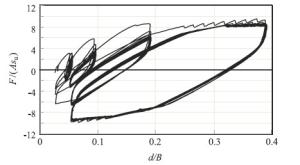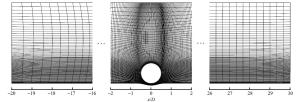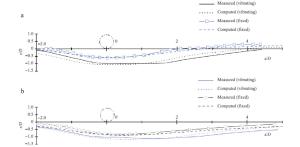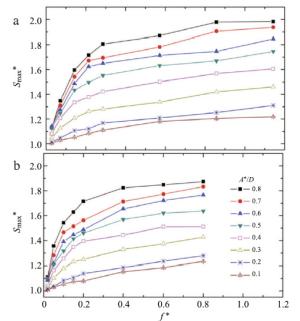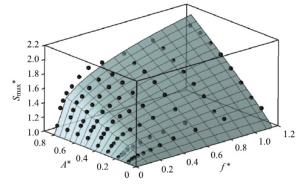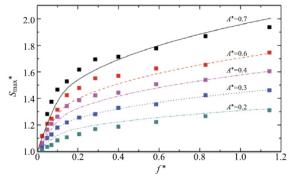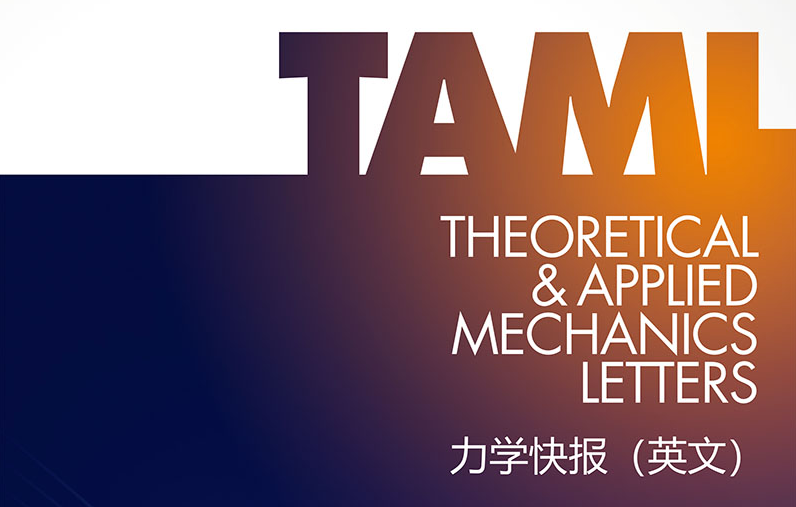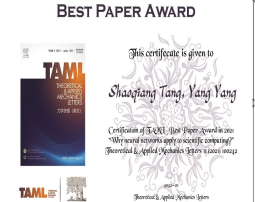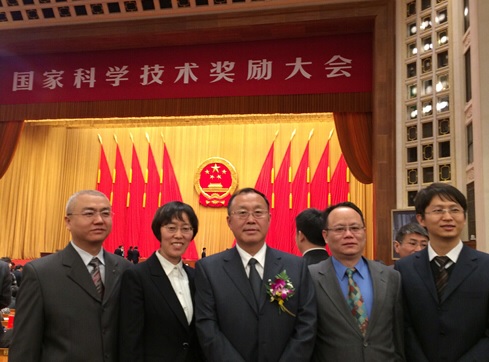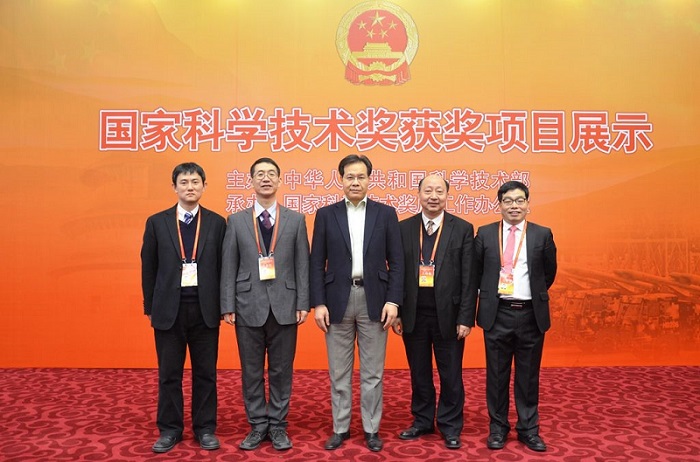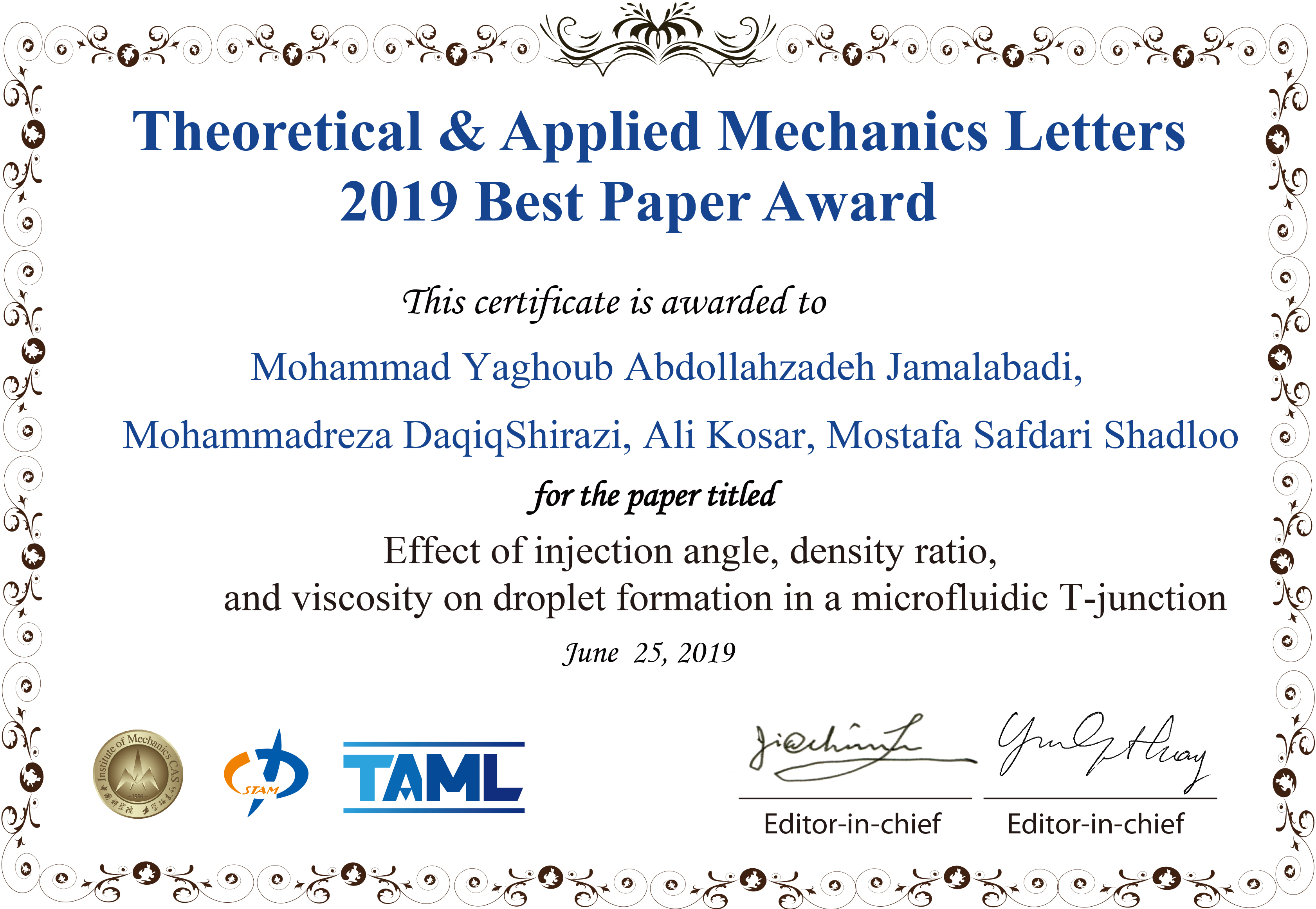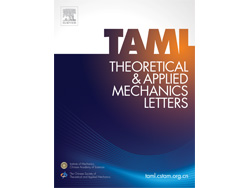Institute of Mechanics,
Chinese Academy of Sciences
2015 Vol.5(2)
Display Mode: |
Theoretical and Applied Mechanics Letters 2015, 5(2): 63-63.
doi: 10.1016/j.taml.2015.03.003
Abstract:
As the offshore industries move from shallow to deep waters in excess of 1000 m, there has been rapid development of ocean engineering practices. Innovations in theoretical and applied mechanics have been essential in this shift and in underpinning the exploitation of offshore oil and gas and renewable energy resources worldwide. Understanding and predicting physical mechanisms of structure-soil interactions are vital for the stability and safety of offshore engineering structures. Accordingly, in this special issue of Theoretical & Applied Mechanics Letters(TAML), eight letter-papers are published to present recent advances in analytical & numerical analysis and in physical modeling of offshore structure-soil interactions in marine environments. They all provide examples of how enhanced understanding of mechanics can impact on applied projects.
As the offshore industries move from shallow to deep waters in excess of 1000 m, there has been rapid development of ocean engineering practices. Innovations in theoretical and applied mechanics have been essential in this shift and in underpinning the exploitation of offshore oil and gas and renewable energy resources worldwide. Understanding and predicting physical mechanisms of structure-soil interactions are vital for the stability and safety of offshore engineering structures. Accordingly, in this special issue of Theoretical & Applied Mechanics Letters(TAML), eight letter-papers are published to present recent advances in analytical & numerical analysis and in physical modeling of offshore structure-soil interactions in marine environments. They all provide examples of how enhanced understanding of mechanics can impact on applied projects.
Theoretical and Applied Mechanics Letters 2015, 5(2): 64-68.
doi: 10.1016/j.taml.2014.12.001
Abstract:
Reinstallation of mobile jack-up rigs next to existing footprints is a problematic operation because the spudcan located near the footprints is subjected to eccentric and/or inclined loading conditions. Geotechnical centrifuge studies have measured these loads for combinations of changing footprint geometry, footprint soil properties and the offset of the reinstallation from the footprint centre. These tests have been of full model spudcans in order to accurately measure the combined loads developed. They have not provided information on the mechanisms of failure occurring during this complex installation. Observations from a visualization test, where a half spudcan is penetrated against a transparent window in a geotechnical centrifuge, are reported in this paper. The mechanisms of failure at different stages during the penetration are presented.
Reinstallation of mobile jack-up rigs next to existing footprints is a problematic operation because the spudcan located near the footprints is subjected to eccentric and/or inclined loading conditions. Geotechnical centrifuge studies have measured these loads for combinations of changing footprint geometry, footprint soil properties and the offset of the reinstallation from the footprint centre. These tests have been of full model spudcans in order to accurately measure the combined loads developed. They have not provided information on the mechanisms of failure occurring during this complex installation. Observations from a visualization test, where a half spudcan is penetrated against a transparent window in a geotechnical centrifuge, are reported in this paper. The mechanisms of failure at different stages during the penetration are presented.
Theoretical and Applied Mechanics Letters 2015, 5(2): 69-73.
doi: 10.1016/j.taml.2015.02.006
Abstract:
Long piles of the ocean oil platform are usually manufactured as the integration of several segments, which have to be assembled one by one during installation. During pile driving, excessive pore pressure will build up in such a high level that hydraulic fracturing in the soil round the pile may take place, which will cause the soil to consolidate much faster during pile extension period. Consequently, after pile extension, the soil strength will recover to some extent and the driving resistance will increase considerably, which makes restarting driving the pile very difficult and even causes refusal. A finite element (FE) analysis procedure is presented for judging the risk of refusal by estimating the blow counts after pile extension, in which the regain of soil strength is considered. A case analysis in Bohai Gulf is performed using the proposed procedure to explain the pile refusal phenomenon.
Long piles of the ocean oil platform are usually manufactured as the integration of several segments, which have to be assembled one by one during installation. During pile driving, excessive pore pressure will build up in such a high level that hydraulic fracturing in the soil round the pile may take place, which will cause the soil to consolidate much faster during pile extension period. Consequently, after pile extension, the soil strength will recover to some extent and the driving resistance will increase considerably, which makes restarting driving the pile very difficult and even causes refusal. A finite element (FE) analysis procedure is presented for judging the risk of refusal by estimating the blow counts after pile extension, in which the regain of soil strength is considered. A case analysis in Bohai Gulf is performed using the proposed procedure to explain the pile refusal phenomenon.
Theoretical and Applied Mechanics Letters 2015, 5(2): 74-79.
doi: 10.1016/j.taml.2015.02.002
Abstract:
Pipelines are the critical link between major offshore oil and gas developments and the mainland. Any inadequate on-bottom stability design could result in disruption and failure, having a devastating impact on the economy and environment. Predicting the stability behavior of offshore pipelines in hurricanes is therefore vital to the assessment of both new design and existing assets. The Gulf of Mexico has a very dense network of pipeline systems constructed on the seabed. During the last two decades, the Gulf of Mexico has experienced a series of strong hurricanes, which have destroyed, disrupted and destabilized many pipelines. This paper first reviews some of these engineering cases. Following that, three case studies are retrospectively simulated using an in-house developed program. The study utilizes the offshore pipeline and hurricane details to conduct a dynamic lateral stability analysis, with the results providing evidence as to the accuracy of the modelling techniques developed.
Pipelines are the critical link between major offshore oil and gas developments and the mainland. Any inadequate on-bottom stability design could result in disruption and failure, having a devastating impact on the economy and environment. Predicting the stability behavior of offshore pipelines in hurricanes is therefore vital to the assessment of both new design and existing assets. The Gulf of Mexico has a very dense network of pipeline systems constructed on the seabed. During the last two decades, the Gulf of Mexico has experienced a series of strong hurricanes, which have destroyed, disrupted and destabilized many pipelines. This paper first reviews some of these engineering cases. Following that, three case studies are retrospectively simulated using an in-house developed program. The study utilizes the offshore pipeline and hurricane details to conduct a dynamic lateral stability analysis, with the results providing evidence as to the accuracy of the modelling techniques developed.
Theoretical and Applied Mechanics Letters 2015, 5(2): 80-84.
doi: 10.1016/j.taml.2015.02.003
Abstract:
The complexity of the loads acting on the offshore wind turbines (OWTs) structures and the significance of investigation on structure dynamics are explained. Test results obtained from a scaled wind turbine model are also summarized. The model is supported on monopile, subjected to different types of dynamic loading using an innovative out of balance mass system to apply cyclic/dynamic loads. The test results show the natural frequency of the wind turbine structure increases with the number of cycles, but with a reduced rate of increase with the accumulation of soil strain level. The change is found to be dependent on the shear strain level in the soil next to the pile which matches with the expectations from the element tests of the soil. The test results were plotted in a non-dimensional manner in order to be scaled to predict the prototype consequences using element tests of a soil using resonant column apparatus.
The complexity of the loads acting on the offshore wind turbines (OWTs) structures and the significance of investigation on structure dynamics are explained. Test results obtained from a scaled wind turbine model are also summarized. The model is supported on monopile, subjected to different types of dynamic loading using an innovative out of balance mass system to apply cyclic/dynamic loads. The test results show the natural frequency of the wind turbine structure increases with the number of cycles, but with a reduced rate of increase with the accumulation of soil strain level. The change is found to be dependent on the shear strain level in the soil next to the pile which matches with the expectations from the element tests of the soil. The test results were plotted in a non-dimensional manner in order to be scaled to predict the prototype consequences using element tests of a soil using resonant column apparatus.
Theoretical and Applied Mechanics Letters 2015, 5(2): 85-88.
doi: 10.1016/j.taml.2015.03.004
Abstract:
The wave-seabed interaction issue is of great importance for the design of foundation around marine infrastructures. Most previous investigations for such a problem have been limited to uncoupled or one-way coupled methods connecting two separated wave and seabed sub models with the continuity of pressures at the seabed surface. In this study, a strongly coupled model was proposed to realize both wave and seabed processes in a same program and to calculate the wave fields and seabed response simultaneously. The information between wave fields and seabed fields were strongly shared and thus results in a more profound investigation of the mechanism of the wave-seabed interaction. In this letter, the wave and seabed models were validated with previous experimental tests. Then, a set of application of present model were discussed in prediction of the wave-induced seabed response. Numerical results shows the wave-induced liquefaction area of coupled model is small than that of uncoupled model.
The wave-seabed interaction issue is of great importance for the design of foundation around marine infrastructures. Most previous investigations for such a problem have been limited to uncoupled or one-way coupled methods connecting two separated wave and seabed sub models with the continuity of pressures at the seabed surface. In this study, a strongly coupled model was proposed to realize both wave and seabed processes in a same program and to calculate the wave fields and seabed response simultaneously. The information between wave fields and seabed fields were strongly shared and thus results in a more profound investigation of the mechanism of the wave-seabed interaction. In this letter, the wave and seabed models were validated with previous experimental tests. Then, a set of application of present model were discussed in prediction of the wave-induced seabed response. Numerical results shows the wave-induced liquefaction area of coupled model is small than that of uncoupled model.
Theoretical and Applied Mechanics Letters 2015, 5(2): 89-92.
doi: 10.1016/j.taml.2015.02.004
Abstract:
A numerical method is proposed for the elasto-plasticity and pore-pressure coupled analysis on the pullout behaviors of a plate anchor. The bounding-surface plasticity (BSP) model combined with Biot's consolidation theory is employed to simulate the cyclic loading induced elasto-plastic deformation of the soil skeleton and the accompanying generation/dissipation of the excess pore water pressure. The suction force generated around the anchor due to the cyclic variation of the pore water pressure has much effect on the pullout capacity of the plate anchor. The calculated pullout capacity with the proposed method (i.e., the coupled analysis) gets lower than that with the conventional total stress analysis for the case of long-term sustained loading, but slightly higher for the case of short-term monotonic loading. The cyclic loading induced accumulation of pore water pressure may result in an obvious decrease of the stiffness of the soil-plate anchor system.
A numerical method is proposed for the elasto-plasticity and pore-pressure coupled analysis on the pullout behaviors of a plate anchor. The bounding-surface plasticity (BSP) model combined with Biot's consolidation theory is employed to simulate the cyclic loading induced elasto-plastic deformation of the soil skeleton and the accompanying generation/dissipation of the excess pore water pressure. The suction force generated around the anchor due to the cyclic variation of the pore water pressure has much effect on the pullout capacity of the plate anchor. The calculated pullout capacity with the proposed method (i.e., the coupled analysis) gets lower than that with the conventional total stress analysis for the case of long-term sustained loading, but slightly higher for the case of short-term monotonic loading. The cyclic loading induced accumulation of pore water pressure may result in an obvious decrease of the stiffness of the soil-plate anchor system.
Theoretical and Applied Mechanics Letters 2015, 5(2): 93-96.
doi: 10.1016/j.taml.2015.02.005
Abstract:
Although the bearing capacity of plate anchors in clay has been studied extensively, the results considering the effects of offshore cyclic loading are relatively rare. In the present study, 1 g model tests are carried out to investigate the effect of cyclic loading on the bearing capacity of plate anchors in clay. The ultimate pullout capacity of plate anchors in clay decreases as the accumulated plastic shear strain grows due to the strain-softening of clay under cyclic loading. The load-displacement curves of these tests are presented and the effects of overburden stress and cyclic loading amplitude on the strain-softening behavior are discussed.
Although the bearing capacity of plate anchors in clay has been studied extensively, the results considering the effects of offshore cyclic loading are relatively rare. In the present study, 1 g model tests are carried out to investigate the effect of cyclic loading on the bearing capacity of plate anchors in clay. The ultimate pullout capacity of plate anchors in clay decreases as the accumulated plastic shear strain grows due to the strain-softening of clay under cyclic loading. The load-displacement curves of these tests are presented and the effects of overburden stress and cyclic loading amplitude on the strain-softening behavior are discussed.
Theoretical and Applied Mechanics Letters 2015, 5(2): 97-100.
doi: 10.1016/j.taml.2015.03.002
Abstract:
This paper studies the coupling effect of the pipeline vibration on the seabed scour. A vertical two-dimensional model is applied to numerically investigate the local scour below a vibrating pipeline with different amplitudes and periods. Using the scour underneath a fixed pipeline as a reference, this paper focuses on the impact of the pipeline vibration on the equilibrium scour depth. Generic relationships are established between the non-dimensional scour depth and the non-dimensional vibrating parameters, i.e., amplitude and frequency. The normalization process takes into account the influences of such parameters as the incoming flow velocity, pipe diameter, and Shields parameter. An empirical formula is proposed to quantify these relationships.
This paper studies the coupling effect of the pipeline vibration on the seabed scour. A vertical two-dimensional model is applied to numerically investigate the local scour below a vibrating pipeline with different amplitudes and periods. Using the scour underneath a fixed pipeline as a reference, this paper focuses on the impact of the pipeline vibration on the equilibrium scour depth. Generic relationships are established between the non-dimensional scour depth and the non-dimensional vibrating parameters, i.e., amplitude and frequency. The normalization process takes into account the influences of such parameters as the incoming flow velocity, pipe diameter, and Shields parameter. An empirical formula is proposed to quantify these relationships.
 Submit a Paper
Submit a Paper
 Subscription
Subscription
News
MORE+
Call for Papers
MORE+
- Crossing-Mechanics Driven by Big Data
- Machine learning in the fluid mechanics research of wind energy
- Mechanics of Origami/Kirigami structures and metamaterials
- New insights and perspectives on impact biomechanics for human tissues: from injury prevention, protection to protective equipment
- Environmental Mechanics for Extreme Natural Events



